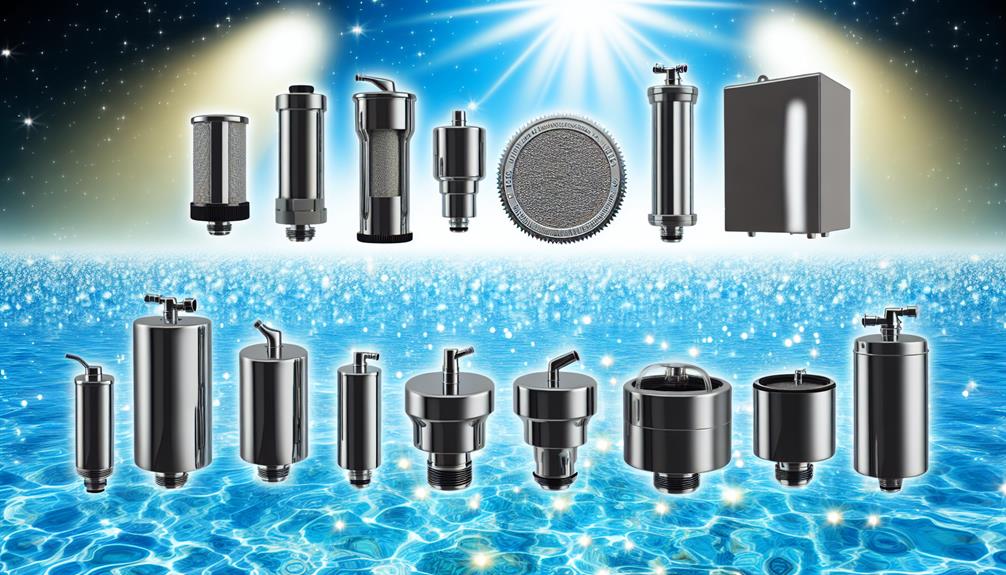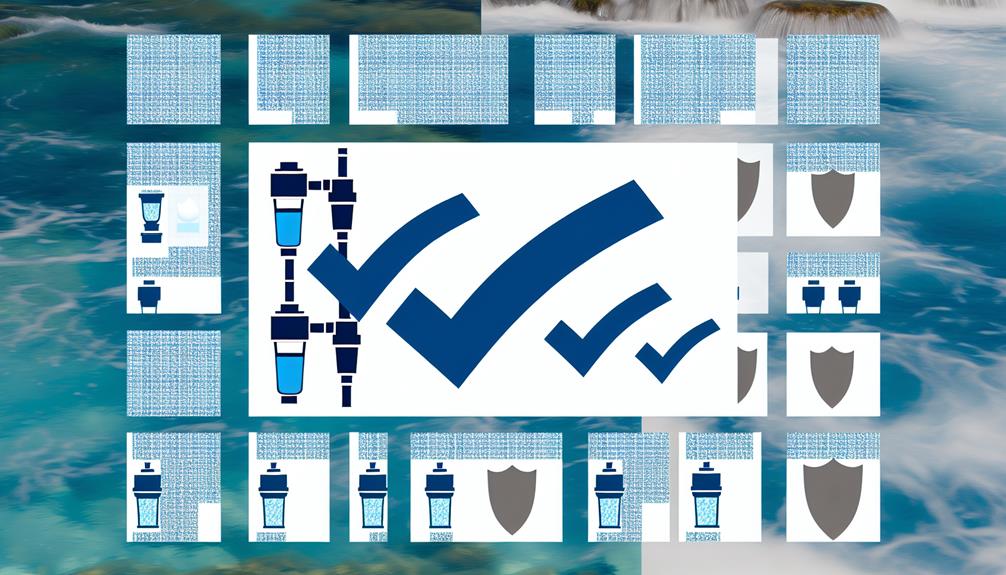Have you ever considered how critical the quality of water you sip at your workplace is to your health? As an employer, it's your responsibility to provide not just any water, but potable water that meets the strict standards set forth by the Occupational Safety and Health Administration (OSHA).
Ensuring compliance with these regulations isn't just about ticking boxes; it's about safeguarding the well-being of your team. You'll need to stay on top of the latest requirements for water filtration systems, regular maintenance, and diligent inspection routines.
While the rules might seem straightforward, the nuances involved in meeting OSHA's water quality standards can be complex. If you're unsure where your responsibilities begin and end, or how to implement these standards effectively, you're not alone.
Let's unpack the essentials of compliance, and explore how you can ensure your workplace remains a safe and healthy environment for everyone.
Understanding OSHA Regulations
Employers are required by OSHA to ensure that all provided water is potable and meets regulatory standards for safe consumption and personal use by employees. Under the OSHA Drinking Water Requirements, employers must provide potable drinking water that's readily accessible during all work hours. This water must meet the safety guidelines established by the United States Department of Labor's Occupational Safety and Health Administration (OSHA) and the Environmental Protection Agency (EPA).
The OSHA standards stipulate that drinking water should be dispensed in a sanitary manner. This could be through a fountain, a covered container with single-use cups, or single-use bottles. It's critical to ensure that employees don't consume anything that could jeopardize their health and personal well-being. Therefore, non-potable water, while permissible for certain uses like firefighting or cleaning outdoor areas, must be clearly marked and mustn't contain hazardous substances.
To maintain regulatory compliance, you're also tasked with providing adequate toilet and handwashing facilities. Handwashing stations must offer hot and cold or lukewarm running water along with soap. In instances where traditional handwashing facilities are impractical, waterless skin-cleansing agents may be used as a substitute.
Potable Water Requirements
Ensuring the provision of potable water, your workplace must comply with specific regulations that outline the necessity of accessible, safe drinking water dispensed in a sanitary manner for all employees. According to OSHA guidelines, you're obligated to provide potable water that meets the Standards of the Public Health Service Drinking Water Act. This measure is essential to safeguard the health and well-being of everyone at the job site.
Providing drinking water at work isn't just a courtesy—it's a mandated requirement. The water must be fresh, pure, and suitably cool, free from contaminants that could pose health risks. Employers must ensure that the drinking water is dispensed through a water dispenser that's regularly cleaned and serviced, ideally equipped with a water filter to maintain quality.
Furthermore, this water must be readily available to all employees without cost. Under no circumstances can you charge employees for access to potable water—a violation of OSHA's stipulations. Whether through a fountain, a covered container accompanied by disposable cups, or single-use bottles, the means of distribution must prevent the spread of germs and contaminants.
Filtration System Compliance
To comply with OSHA standards, you must regularly inspect and maintain your workplace's water filtration systems to ensure they provide safe, uncontaminated drinking water. The Occupational Safety and Health Administration (OSHA), which is part of the United States Department of Labor, mandates that potable water must be accessible to maintain a safe and healthy work environment. This means your water filtration units must meet specific regulations, outlined in the Health Service Drinking Water standards, to prevent any form of waterborne contamination.
As you assess water dispenser compliance, it's critical to understand that OSHA regulations require not just the availability of drinking water but also its quality. If your water supply doesn't meet these standards, you're obligated to provide bottled water as an interim solution until the issues are resolved. Remember, non-potable water sources must be distinctly marked to eliminate any confusion and to protect your employees from hazardous substances.
You're also responsible for ensuring that auxiliary facilities such as handwashing stations are equipped with suitable filtration systems to supply clean water. In essence, to provide drinking water that satisfies OSHA requirements, a proactive approach to filtration system compliance is non-negotiable. Regular audits, timely maintenance, and immediate corrective actions are the cornerstones of fulfilling your regulatory obligations.
Maintenance and Inspection Standards
Maintaining a rigorous schedule for the inspection and upkeep of your workplace's water filtration and sanitation facilities is crucial to meet health and safety standards. Under the Occupational Safety and Health Act (OSHA), you're required to ensure that all water dispensers provide potable water and that the systems are sanitary and function correctly. This means you must regularly check and service your filtration units to keep them adequate to meet the health needs of your workforce.
Your maintenance and inspection standards must include a detailed review of all plumbing systems to guarantee a continuous supply of running water. Non-potable water sources, while not for ingestion, must also be maintained free from hazardous substances. Toilet facilities, as per OSHA regulations, need ongoing sanitation to remain clean and must offer privacy. Remember, each gender requires a separate facility.
Furthermore, handwashing stations must be outfitted with hot and cold, or at least lukewarm, running water alongside soap. Should traditional methods be impractical, approved waterless skin-cleansing agents are permissible. Showers, changing rooms, and waste disposal areas are also under the scope of these standards and must be kept in a hygienic state to protect employee health and safety.
Training and Information Dissemination
Employers bear the responsibility of equipping their workforce with comprehensive training and clear information regarding workplace water filtration and sanitation practices, in alignment with OSHA guidelines. Under the Health and Safety Act, the provision of potable water and the dissemination of health and safety information aren't merely recommendations; they're regulatory requirements to ensure compliance and the protection of employees.
- Training:
- OSHA's Health Administration (OSHA) mandates employers to provide training that helps employees understand the importance of potable water and proper sanitation.
- Available training courses, including for Construction and General Industry, can be enrolled in online, ensuring accessibility and convenience.
- Training must be ongoing to meet evolving standards and to refresh employee knowledge.
- Information Dissemination:
- Employers are required to inform their workforce about the standards for potable water, as per the US Public Health Service Drinking Water Standards.
- Information on the necessity of handwashing, along with the provision of adequate facilities, must be clearly communicated.
- Compliance:
- Regular assessments should be conducted to ensure that training and information dissemination strategies are effectively implemented and that they meet OSHA's stringent standards.
- Detailed records of training sessions and informational updates must be maintained as proof of compliance.

